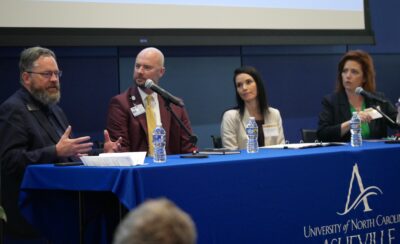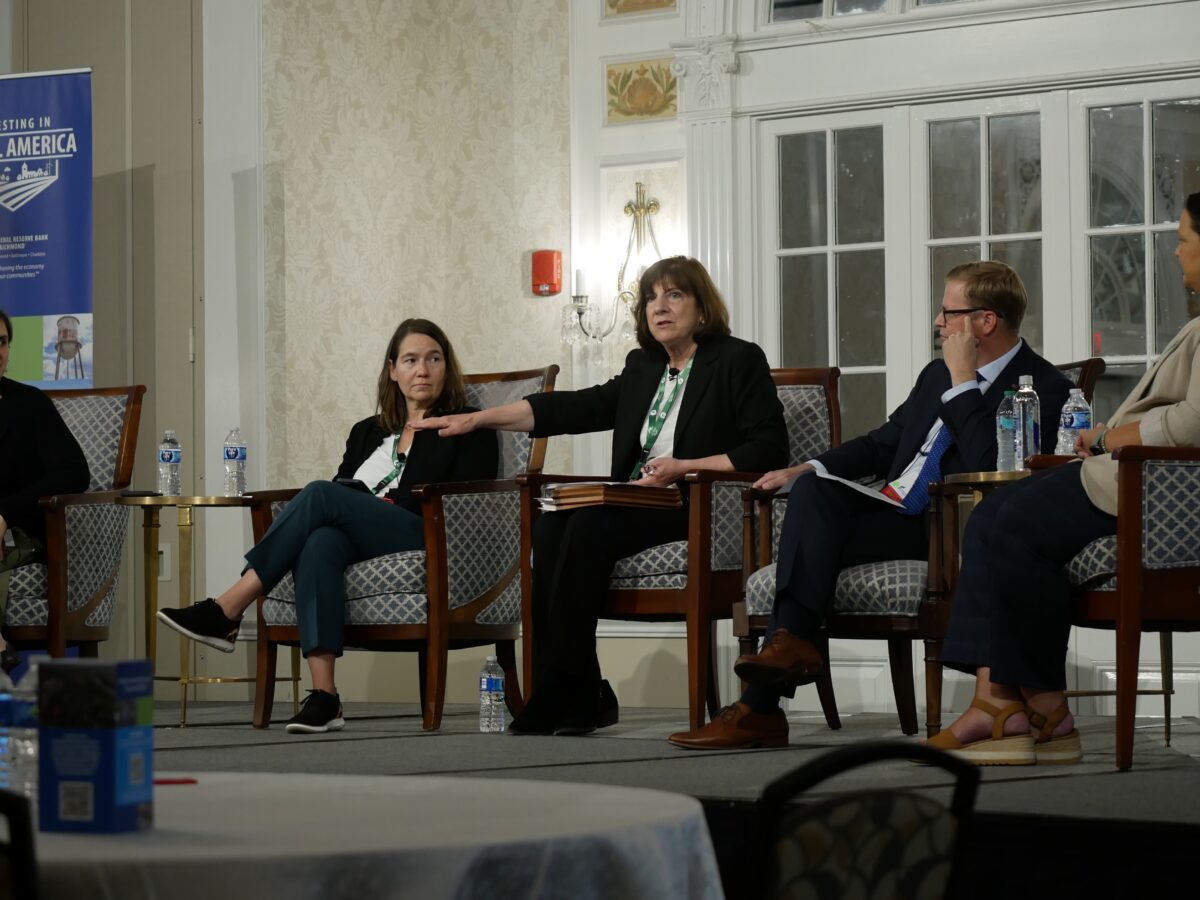
If rural communities want to attract jobs, child care solutions are needed, economic experts said at a convening on rural investment hosted by the Federal Reserve Bank of Richmond this month.
Child care, transportation, and housing are “the Holy Trinity of community development,” said Daniel Davis, group vice president at the bank, which covers a six-state region including North Carolina.
“You put those three together, and then suddenly, we’re able to support the jobs,” Davis said. “We have a reason for people to stick around. More opportunity emerges because we’re covering those three bases.”
![]() Sign up for Early Bird, our newsletter on all things early childhood.
Sign up for Early Bird, our newsletter on all things early childhood.
Workforce development has played a key role in the success of the small towns and rural areas that have gone from population loss to growth in recent years, said Tom Barkin, president and CEO of the bank’s Richmond chapter. That includes “supporting workers’ whole-life needs,” Barkin said. Twenty-seven percent of the region’s small towns with declining populations started experiencing growth from 2020 to 2023, compared with 3% in the previous decade.
Yet child care shortages and high prices remain barriers across rural America. And many workforce development efforts leave child care out of the equation.
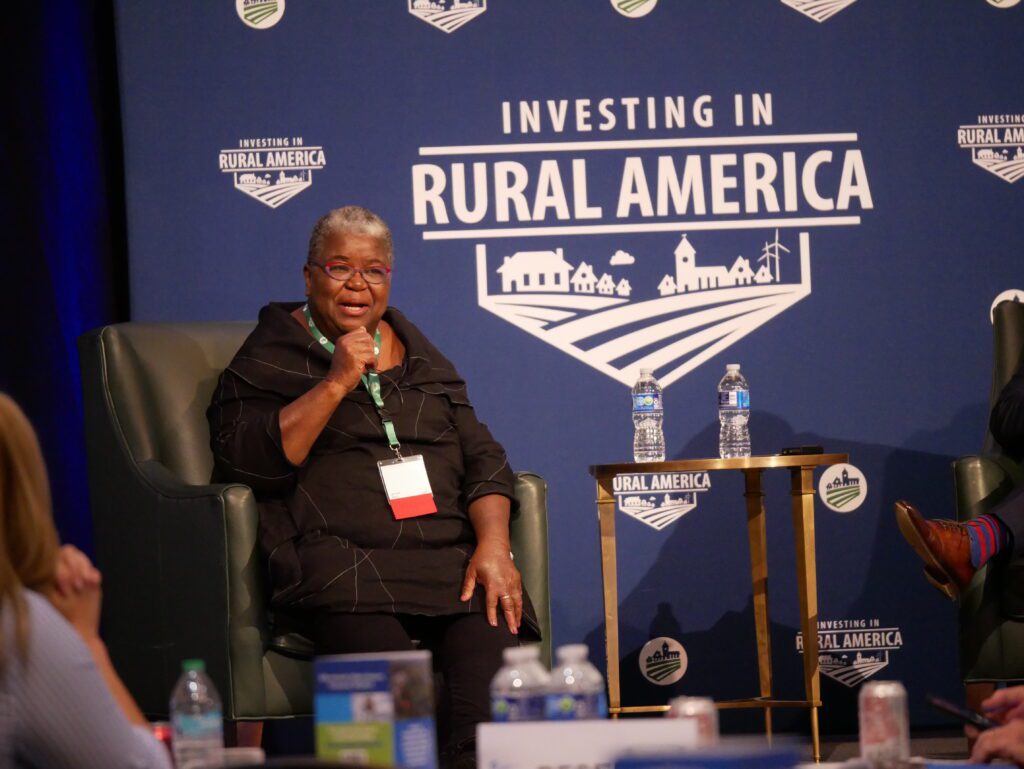
“They’re asking people to come to participate in training, and they forget about the child care piece,” said Donna Gambrell, the event’s keynote speaker and president and CEO of Appalachian Community Capital. “And people would say, ‘I can’t possibly do this because I’ve got children that need to be taken care of. How could I do both?'”
In North Carolina, child care costs take up a larger portion of household income in rural counties than in many urban counties, a recent report from the NC Rural Center says. And about 44% of rural residents live in child care deserts. Those deserts are just as likely in urban counties, the report found, and even more likely in suburban counties, where about 50% of residents live in child care deserts.
But child care challenges are different in rural places, panel participants at the conference said. So are the solutions.
“You don’t have the number of kids to get the economies of scale, or maybe the right balance of kids between infants and preschoolers to be able to make a child care center or home-based care sustainable,” said Sonya Ravindranath Waddell, a vice president and economist at the bank. “You have lower household incomes. Often the transportation is harder.”
The panel highlighted four efforts to increase access to high-quality early care and learning in rural communities.
Related reads

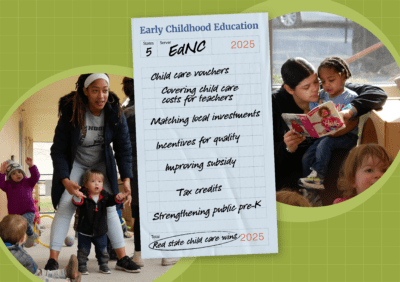
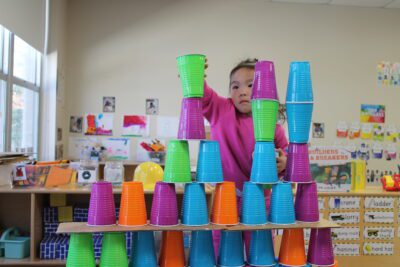
Multi-pronged collaboration for high-quality expansion
For 26 years, Middle Tyger Community Center in Spartanburg County, South Carolina, has been offering all types of community services: GED courses, a food pantry, counseling, a senior center, and more. The center also houses a high-quality child care program, This Is My Child.
The program, which offers care for 60 children from 6 weeks old to 4 years old, is a collaboration between the nonprofit center and the local school district. The center also blends funding streams from a variety of sources to provide care for children with special needs and a sliding tuition scale for working parents who make too much to qualify for state child care subsidies. And thanks to new private and public funding, the program is set to open a larger campus with 17 classrooms to serve about 300 children.
Haley Grau, the center’s executive director, said that two years ago, she got tired of maintaining a waitlist of three to four years.
“I was tired of telling grandmothers that needed it so they could go to work, ‘I’m sorry, I just don’t have a space for you,'” Grau said.
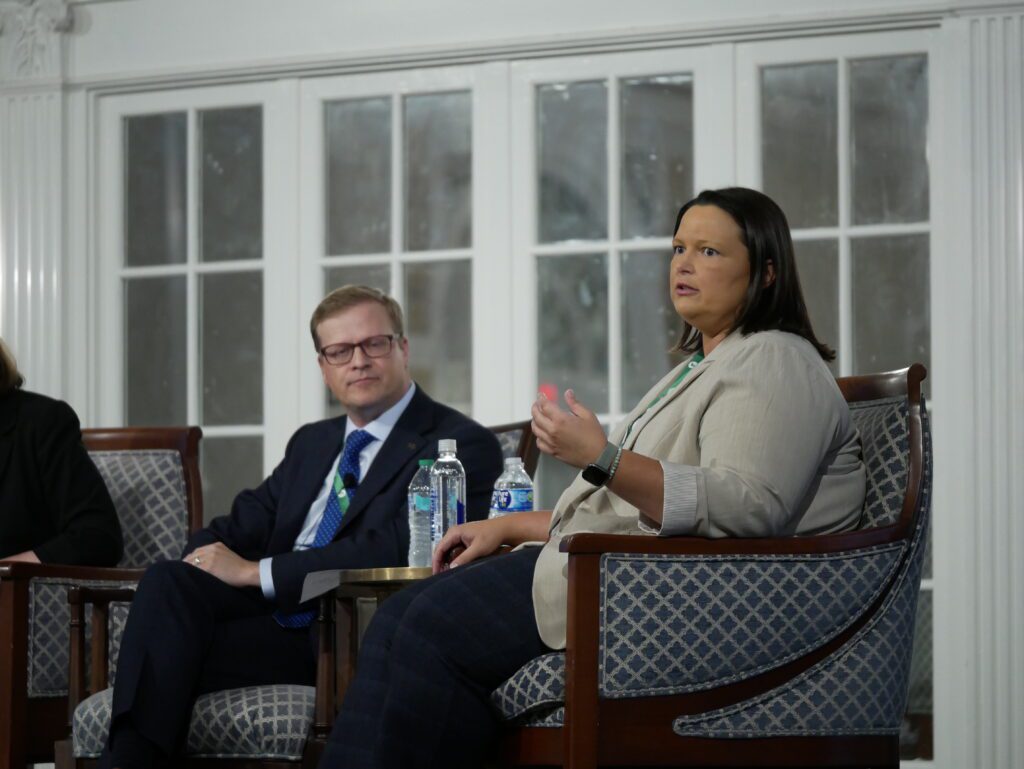
So she went to local industry leaders and other partners.
“I said, ‘Look, you’ve been investing for 26 years. You’ve seen the return on investment every single time. We help your employees. We do all this, but we want to do more. We need help, and so will you help us build a bigger facility?'”
Private partners are providing 75% of the capital for the expansion, Grau said. The local school district donated the land for the facility and provides free after-school care for the center’s employees in exchange for discounted rates for K-12 teachers. Grau also secured some state and federal funding. She said the nonprofit model is key to the project’s success. Employers do not have to manage the liability associated with on-site care, and government does not have to bear the entire cost.
Related reads
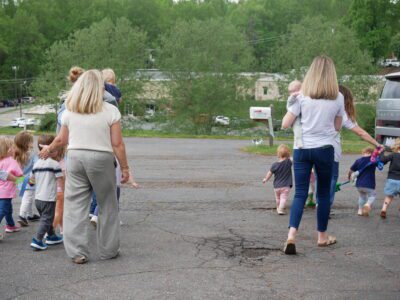
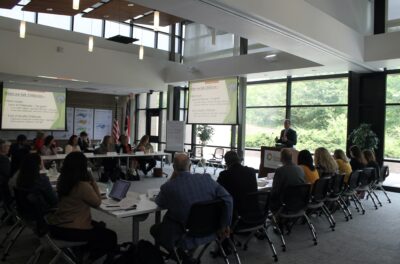

Partnerships with local universities as well as high school teacher cadet programs are providing the next generation of early educators with hands-on experience in a high-quality environment.
“We are the model for collaboration,” she said. “Invest, and we’ll do it bigger, and we’ll return that investment.”
Pairing workforce development and child care
The EO Regional Workforce and Child Development Hub is providing child care for 300 young children at its Ballad Center for Early Learning in Abingdon, Virginia, an area with particularly low child care access. The 87,000-square-foot facility, a former Kmart, is also home to a Career Commons, where K-12 students across southwest Virginia can explore STEM and manufacturing jobs, and a teaching lab for GO Tec, a middle school program focused on high-demand career pathways.
The hub is backed by nonprofit EO, which raised $26.5 million to fund the project. About 80% of that funding came from private partners, said Travis Staton, EO’s president and CEO. The rest came from a state investment through federal pandemic funding.
“We had to develop the business case for why child care is dually important,” Staton said. He said the project came after the pandemic, when child care was being recognized for its essential role in filling current and future workforce needs. The project leaders focused on aligning multiple decision makers around the issue and convincing them that investing in child care would pay off.
“There is no better ROI,” Staton said.
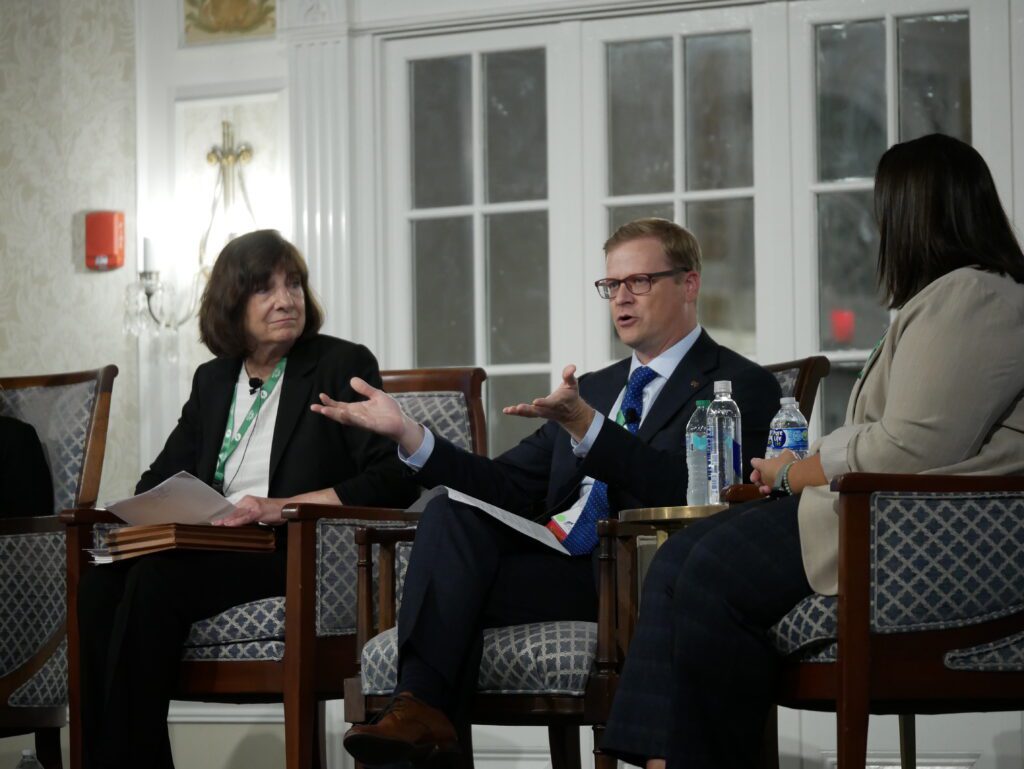
“Everybody says it’s an issue,” Staton said. “It is an issue, but you’ve got to quantify it. You’ve got to know your data. You’ve got to talk to the employers and build that business case, but also then understand how to align prioritization among leaders and decision makers to say we’re going in on this. It may not be everything we do, but it needs to be a large portion. And play the long game, not the short game.”
Staton said the building will be part of a “hub and spoke” model to help other providers in the region. EO was also part of an effort to recruit and place 200 new early childhood educators in the field across the state.
“You have to support and lift the system up in order to do that,” Staton said. “Otherwise, you’re just going to move teachers and you’re going to move kids and not really increase the supply.”
Reducing non-labor costs
In Yadkin County, cross-sector leaders are seeking funding to build Mama Jewell’s ChildPlex, a model that could ease some of the financial struggles of rural child care.
Because about 60% of child care programs’ budgets are spent on labor, it’s hard to cut costs and maintain quality. Those high costs are passed on to families.
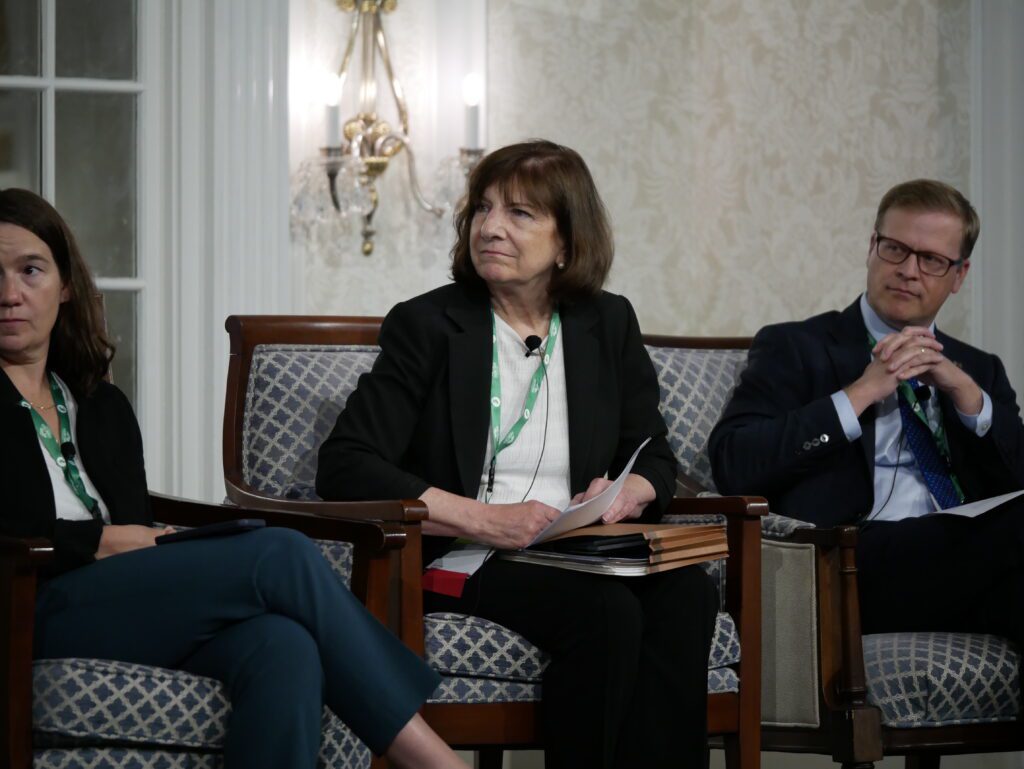
The ChildPlex model reduces non-labor costs by housing six small child care programs in one facility. The providers can share the costs of start-up facility needs, materials, playground equipment, and administrative tasks.
The model will allow for more affordable care for families and higher compensation for providers, said Sandi Scannelli, former president and CEO of Shallow Ford Foundation, a private philanthropic organization in the area. It will also provide a supportive peer network for new providers.
The effort’s leaders, which include stakeholders from business, local government, the local Smart Start affiliate, and the local school district, were able to change state rules to create a new licensing pathway for facilities with multiple licenses under one roof. Rules on ratios and facilities were also adjusted, Scannelli said.
“Because (the state) was so interested in an innovative solution, they really worked with us,” she said.
Now the effort is working to raise about $2.7 million to build the facility on land donated by community members Marion and Jewell Welborn. The program will be named after Jewell, who recently died, “because of her maternal care and kindness with everyone she met,” the effort’s website reads.
The local effort was originally inspired due to a lack of child care for the local school district’s teachers. In the past decade, the county has lost 82% of its family child care homes and 56% of its private providers, Scannelli said.
“It has reached crisis proportion,” she said.
Supporting home-based providers
More support is needed for formal and informal home-based care, “the most prevalent form of child care in this country,” said Natalie Renew, executive director of Home Grown, a national initiative aimed at improving quality and access in home-based care.
The group supports both licensed home-based programs and informal care from families, friends, and neighbors.
“This is the mainstay in rural communities,” Renew said. “It’s harder for centers to operate effectively, and so often it is home-based child care that kind of fills that gap.”
Public investment is needed to fill the gap between what parents can afford and the cost of providing care, including in home-based settings, Renew said.
Regulatory changes are also needed to ensure providers can operate and are supported in providing safe and high-quality care. Building and licensing regulations are often cost prohibitive, vary from locality to locality, and are not formed with the home-based setting in mind, Renew said.

Renew lifted up two efforts in North Carolina. In Transylvania, an effort created a resource network for about 60 grandparents providing care so they could access resources, coordinate play dates, and provide support to one another.
“This then became infrastructure to ensure that we could deliver Hurricane Helene response dollars,” Renew said.
And in Cabarrus County, local nonprofit Families First used federal pandemic funding to implement Parent Child Plus, a home visiting program, to improve quality within home-based programs.
Renew also pointed to a statewide policy change outside the region: Vermont’s Act 76, legislation the state passed in 2023 that funds child care through a payroll tax of 0.11% from employees and 0.33% from employers.
“It has truly delivered — doubled the pay of home-based child care providers,” Renew said. “It has just been incredible. It’s a small and it is a largely rural state, so the money goes pretty far. But I think I would look at that as an example of a really low-pain public taxing scheme that seems to be working really well.”
Editor’s note: The Federal Reserve Bank of Richmond’s Rural Investment Collaborative provides Community Investment Training to annual cohorts of eligible rural organizations across North Carolina, South Carolina, Virginia, West Virginia, and Maryland.
Recommended reading

